Growing a Mindfulness Practice in the Garden
Gardening and immersion in green spaces has been linked to improvements in mental and physical health, as well as serving as an educational playground for all ages. Whether your garden is a small backyard farm, a windowsill plant, or the entire park, there is also an opportunity to grow your mindfulness practice in these settings.
PRACTICE SHOWING UP
Take a moment to reflect on your mindfulness practice: How has it been going? How often are you showing up?
If time outdoors or in the garden is already a regular activity for you, it can be a great way to build a more routine mindfulness practice. You may already be tending to a garden - watering, weeding, and warding off pests. But in showing up for the garden, can you simultaneously use that time to show up for yourself? Whether for a minute or a half hour - how can you be fully present, just there in each moment?
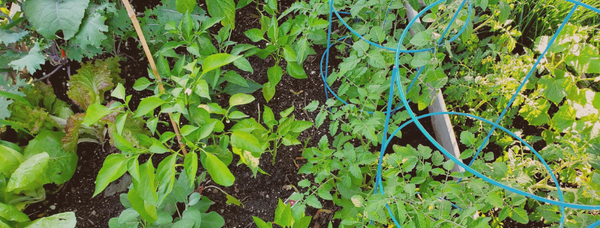
EXPLORING YOUR SENSES: TRY IT!
Time in the garden can give us the opportunity to take a mental break and tune into the sensory experiences of what’s actually happening in real time. So how can you implement gardening as a grounding mindfulness practice?
As you move through this mindfulness exercise - remember there are no ‘right’ answers - just awareness. It can be done simply sitting in a park, or while exploring your garden. Move through this exercise slowly, take your time as you tune in to each of your senses. Allow yourself to experience all that there is around you.
As these sensory checkpoints become more familiar it will become a great grounding toolkit to take along to any green space you find!
What do you smell?
- Fresh cut grass, summer rain, or damp soil.
- Does this garden have herbs? Gently rubbing the leaves of your herbs (such as mint, cilantro, or basil) will further release the scents.
- What words would you use to describe the smell? Fresh? Earthy?
What do you hear?
- As you move about your garden - take in the sounds.
- Some sounds might be near - Doves cooing, the gentle rustling of wind through the trees, the hum of a visiting bumblebee?
- Some sounds might be more distant - Traffic motoring, children playing, a neighbor’s lawn mower?
What do you feel?
- Tune in to the sensation of touch.
- Move your hands carefully across the leaves, stems or flowers. How would you describe what you can feel on your fingertips? Smooth, slightly prickly, crunchy?
- How about the soil - Is it damp or dry? Is it warm or cool?
- What is the temperature of the air, do you feel a breeze?
What do you see?
- If checking in with the garden frequently, you will be surprised with the amount of growth that can occur in as little as a single day!
- Observe all the forms of life in your garden. What colours do you see?
- Scan your garden for friendly visitors like pollinators or ladybugs, or for signs of less welcome friends like slugs, mites, or other garden pests.
- Sift through the soil and see who is working in the compost department of your garden.
- Shift your visual field to one single plant, or part of one plant.
- What do you find? Is there new growth, like flowers, buds, or sprouts? Are there signs of decay?
- Carefully examine its shape, size, or the direction it tilts. Are there any patterns you see on it’s petals or leaves?
What do you taste?
Of course, this is limited to vegetable gardens (unless you happen to be a seasoned botanist who can skillfully navigate the world of edible flora and fauna). But this is still a relevant checkpoint even if the answer is nothing (or if you recently finished a PB + J sandwich or sipped a coffee, that counts too!)
- If your garden is sporting a selection of herbs - maybe you nibble a corner of a basil leaf or berry. How do you describe its taste? Is it bitter or sweet?
(Note: It is recommended to wash any herbs, fruits, or vegetables prior to consuming)
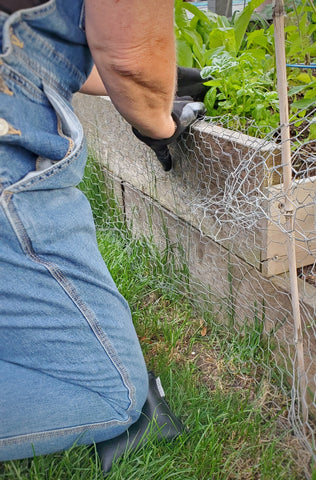
GETTING STARTED
Gardens are a place for education and growth. We are reminded to be grateful for our food, to appreciate where it comes from, and to watch with curiosity and amazement the growth that occurs before us.
Whether you tend to a backyard garden or a friend’s yard, visit a community garden, or participate in a not-for-profit that donates fresh produce to food banks and shelters, the garden offers a limitless classroom for all ages to explore!
To ensure your comfort and gardening longevity it can be helpful to check in with what you need to feel supported. As you learn to tap into mindfulness in the garden be aware of taking care of your body as well – things such as sunscreen, a hat, some light stretching might already be on your list. Part of Love My Mat’s new Wipeable Vinyl Collection, these Knee Pillows were the perfect companion to get down to plant level and spend time in the garden without knee discomfort. Easily transported from the community garden or a friend’s yard to your outdoor practice, and no stress about getting dirty!
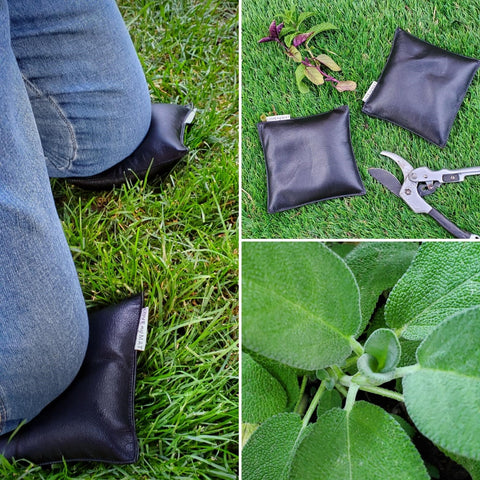
--
About Kelsi
Social: @greenspacemvmt
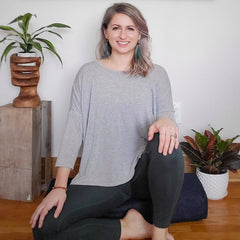
Kelsi Salisbury is a yoga instructor, outdoor enthusiast, and chronic car singer. Kelsi encourages exploratory movement with mindfulness at the forefront, sharing in the humanness of becoming better listeners to our own bodies and minds as we move about our lives. If not at the yoga studio you might find Kelsi running on a trail, paddleboarding at a conservation area, getting lost in endless crafting, or tending to her vegetable garden.




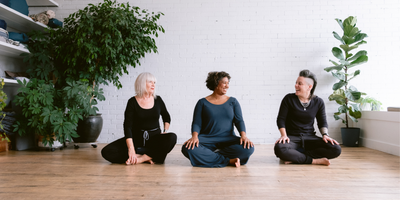
Comments
Natalie said:
Love this 🥰